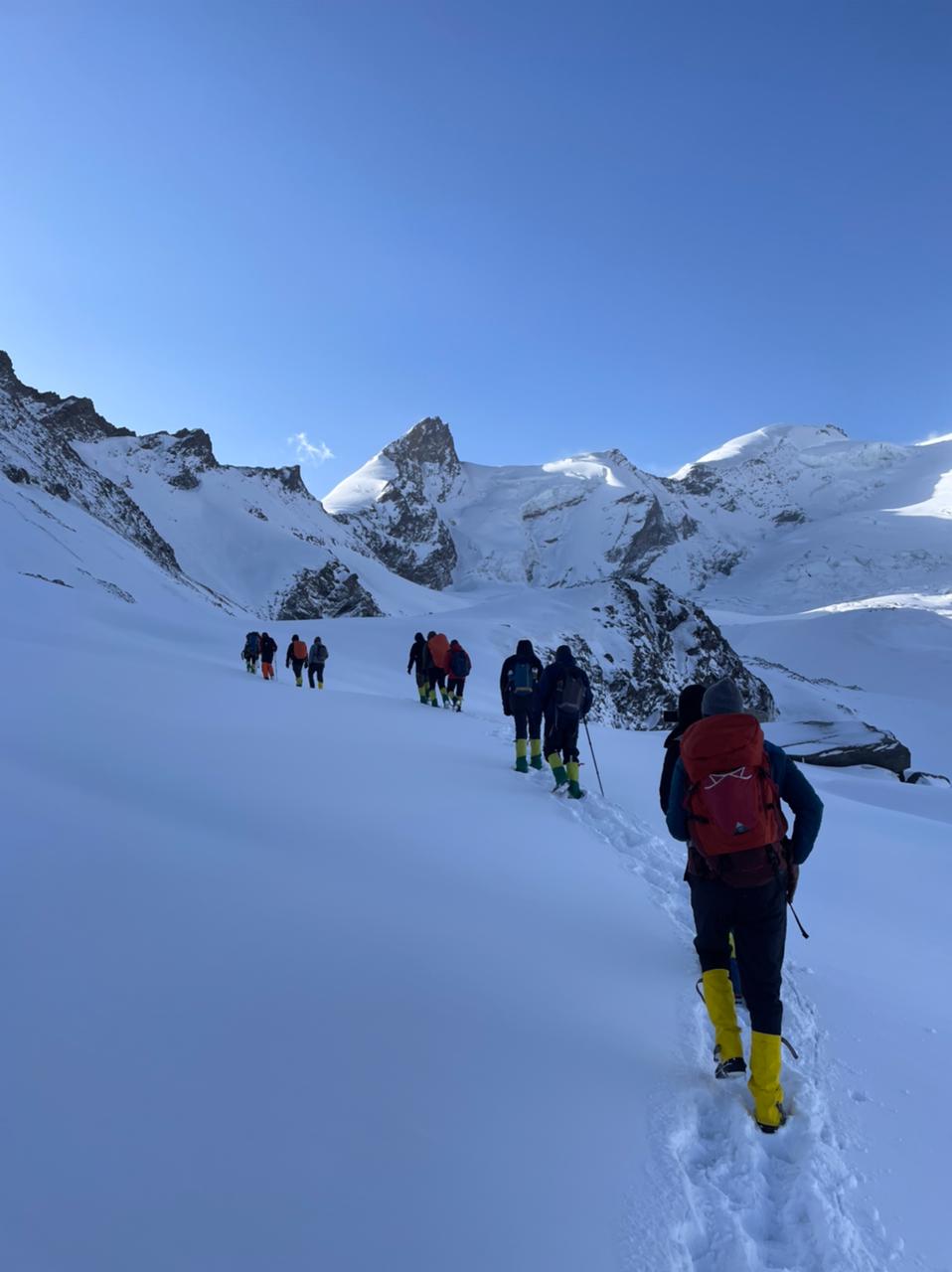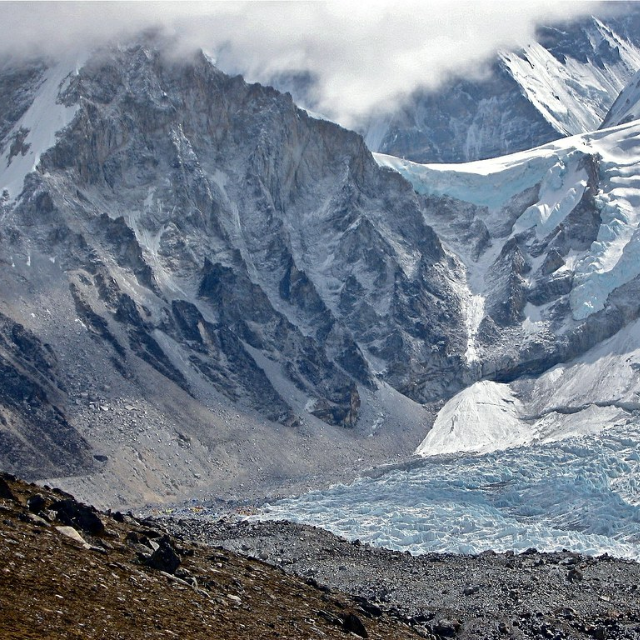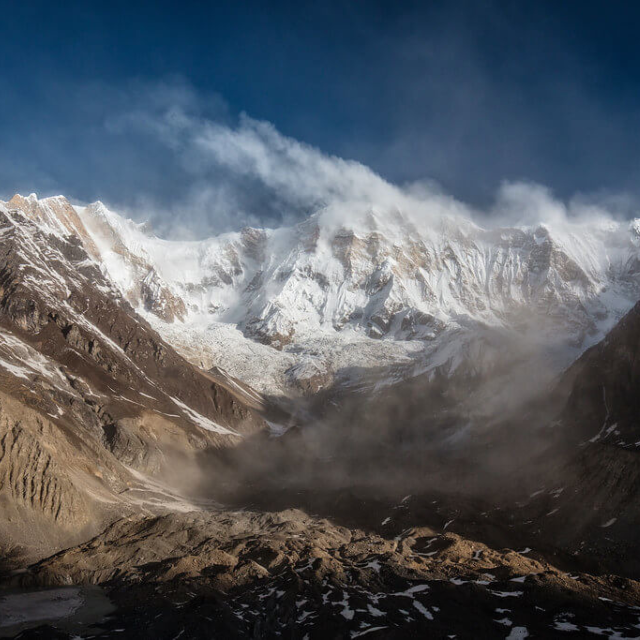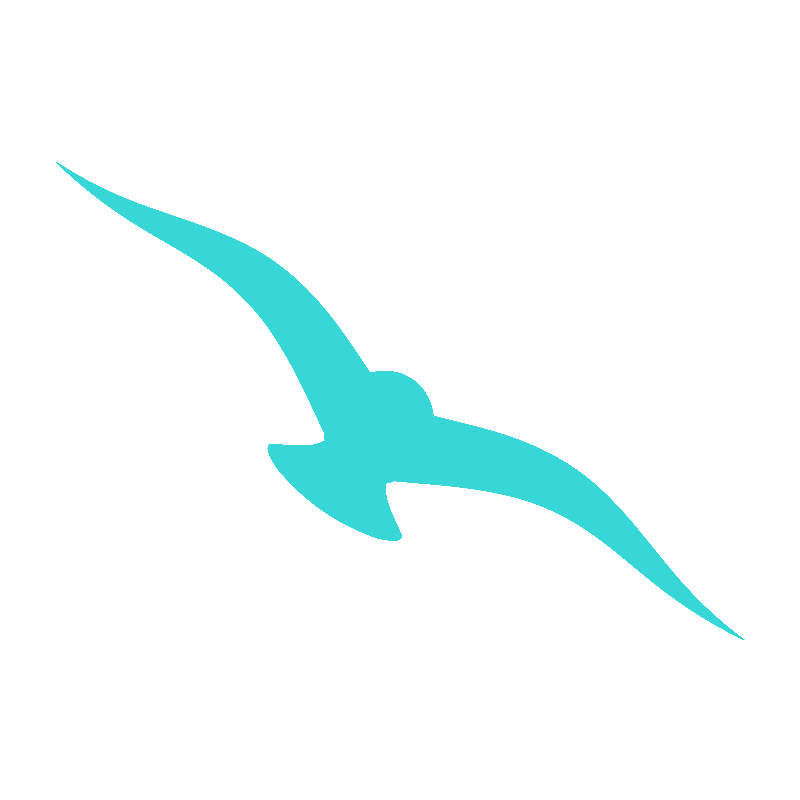
Dhaulagiri Circuit Trek
17 Days
140 Km
17,585 FT
18+
Pro
The Dhaulagiri Circuit Trek is one of the most challenging and rewarding treks in Nepal, taking you around Mount Dhaulagiri (8,167m), the seventh-highest peak in the world. This remote trek offers a true wilderness experience, crossing glaciers, high mountain passes, and deep valleys while exploring isolated villages and unspoiled landscapes. It is an ideal trek for experienced trekkers seeking adventure, solitude, and breathtaking Himalayan views.
Why This Trek?
- Remote & Less Crowded: One of Nepal’s least-visited treks, offering a pure, untouched adventure.
- Panoramic Mountain Views: Witness Dhaulagiri, Annapurna, Machhapuchhre, and Nilgiri up close.
- Challenging High Passes: Cross the French Pass (5,360m) and Dhampus Pass (5,200m) for a thrilling experience.
- Glacier Walks: Trek across the Chhonbardan Glacier and Hidden Valley, adding to the trek’s adventure.
- Rich Cultural Experience: Explore traditional Magar and Gurung villages with unique customs and hospitality.
Included/Excluded
Select Dates
Guest in maximum
BOOK NOWBook With Confidence
Itinerary for
Dhaulagiri Circuit Trek
Day 1
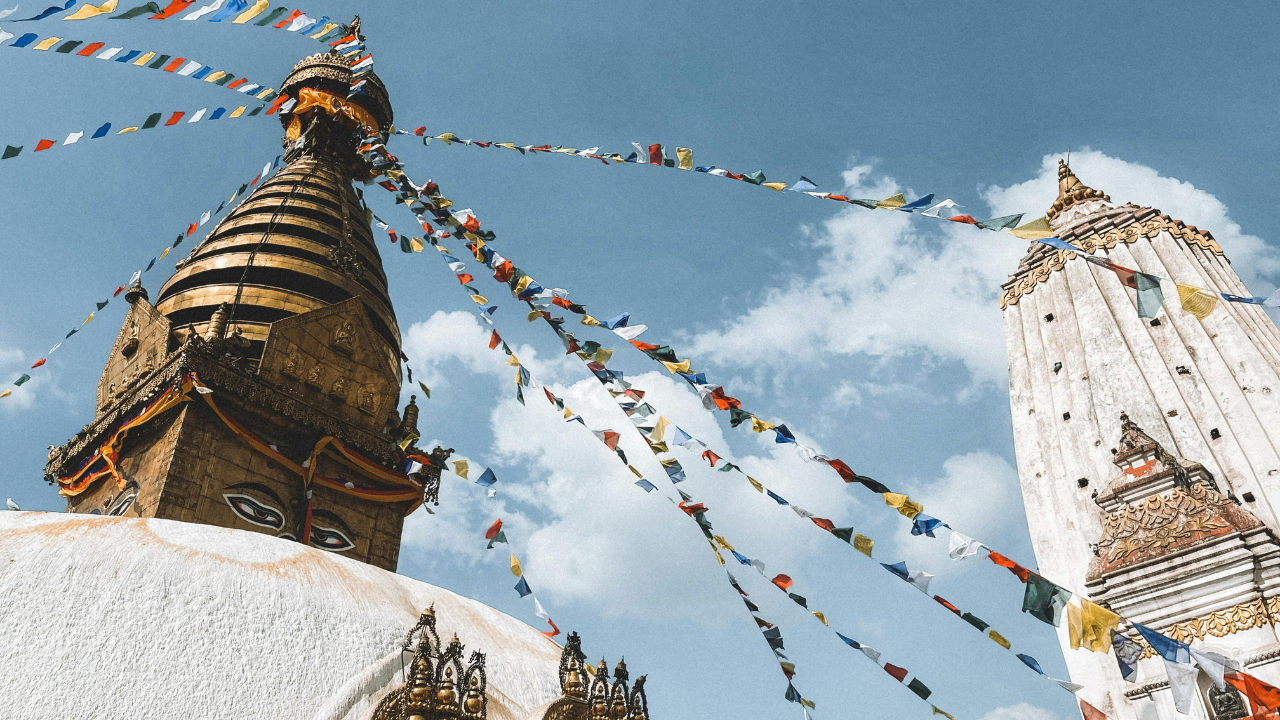
Day 2

Day 3

Day 4

Day 5

Day 6
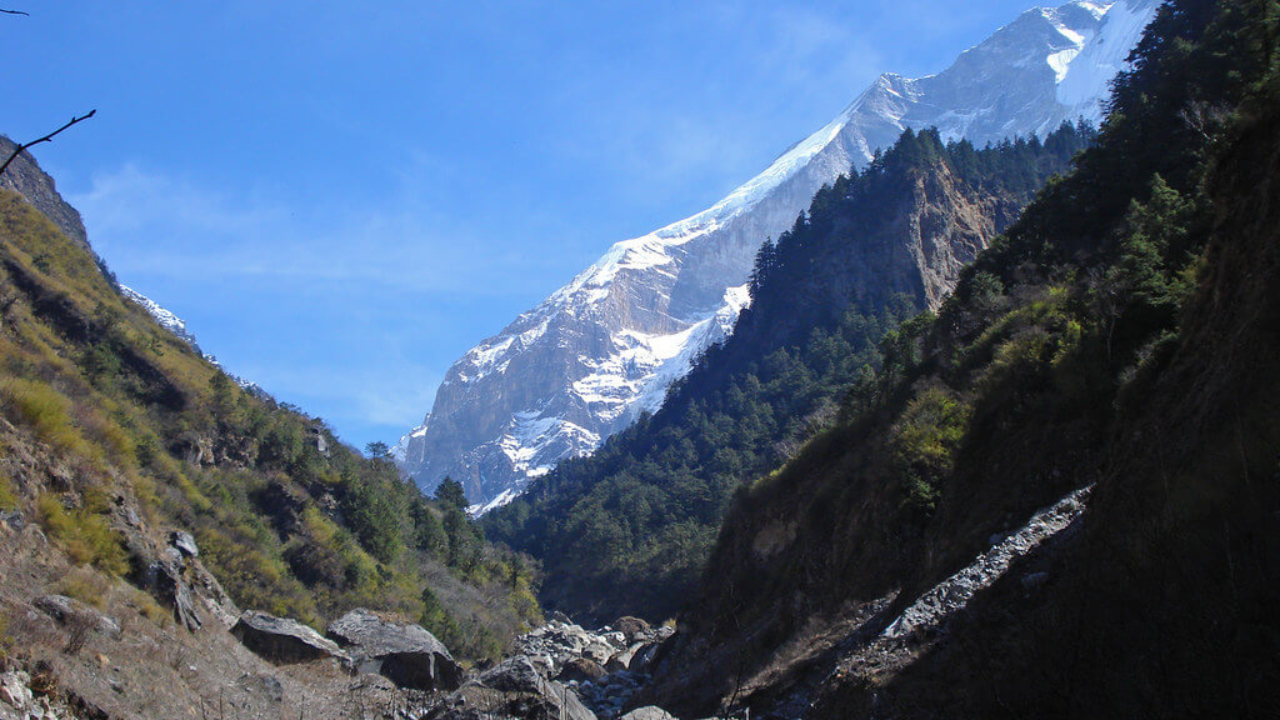
Day 7

Day 8

Day 9

Day 10
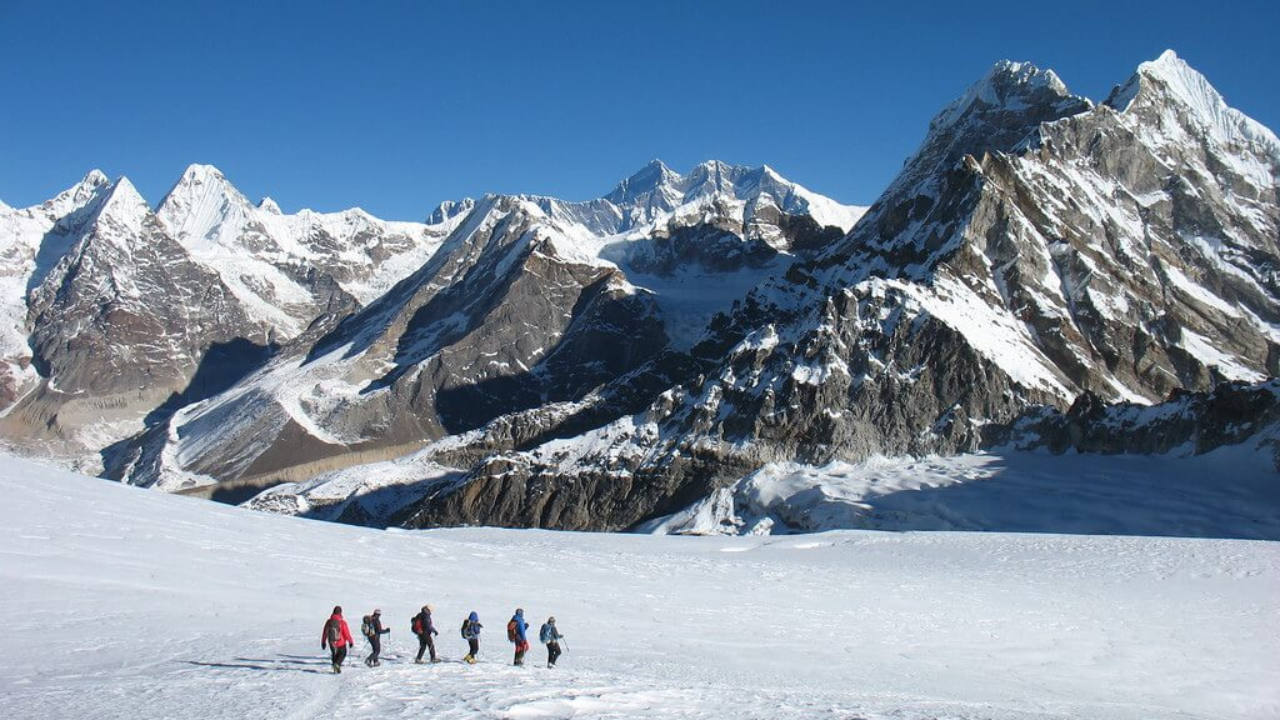
Day 11

Day 12

Day 13

Day 14
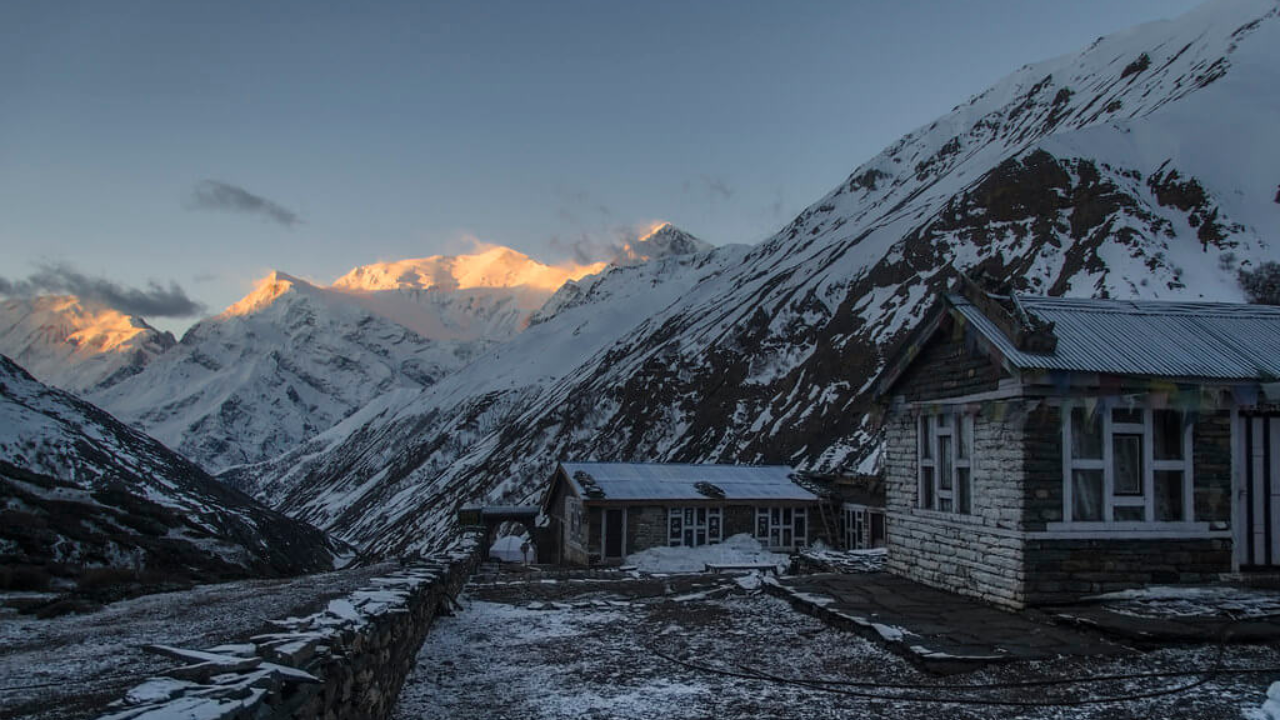
Day 15
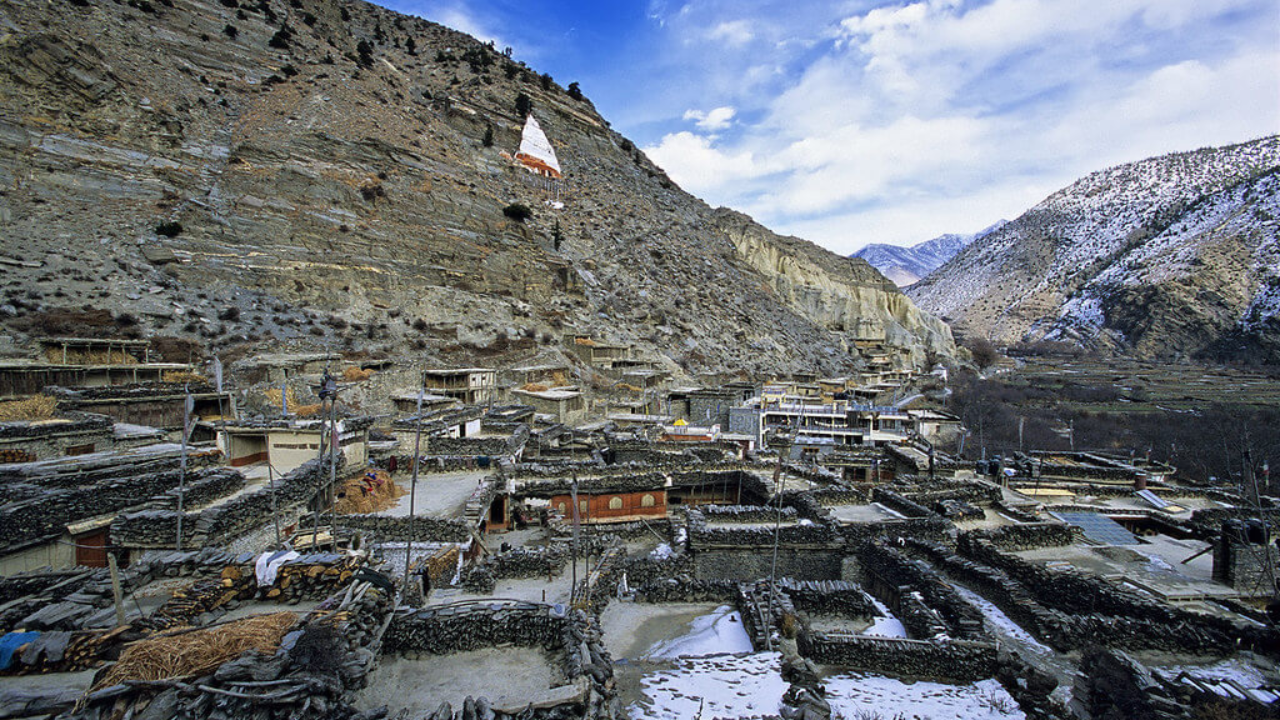
Day 16
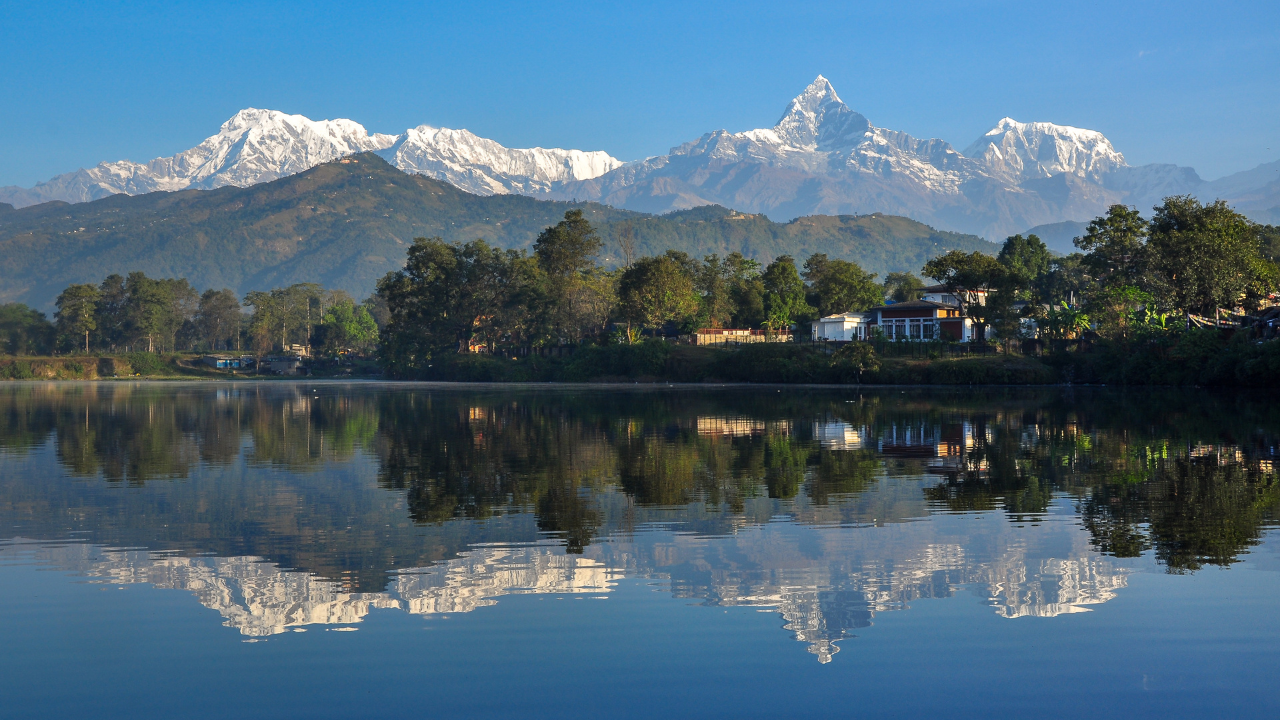
Day 17

Complete Dhaulagiri Circuit Trek Information
The best time for the Dhaulagiri Circuit Trek is March to May (spring) and September to November (autumn). Spring (March-May) brings blooming rhododendrons and clear skies, while autumn (September-November) offers stable weather and stunning mountain visibility. Winter (December-February) makes high passes extremely difficult due to heavy snowfall, and monsoon (June-August) brings rainfall, increasing the risk of landslides.
Traveling from India to Kathmandu, Nepal, is convenient and offers multiple options, including flights, road trips, and train connections. Here’s how you can reach Kathmandu from different parts of India:
By Air (Fastest & Most Convenient Option)
Direct flight from India is the easiest and fastest way to reach Kathmandu. Tribhuvan International Airport (TIA) in Kathmandu is well-connected with major Indian cities like Delhi, Mumbai, Kolkata, Bangalore, and Varanasi. Major airlines such as Air India, Nepal Airlines, and IndiGo operate regular flights, with Delhi to Kathmandu being the most frequent route (approx. 1.5-hour flight).
By Road (Budget-Friendly & Scenic Option)
If you prefer a road trip, you can travel from India to Nepal by bus or private vehicle via the following border crossings:
- Sunauli-Bhairahawa (from Gorakhpur, Uttar Pradesh): The most popular and well-connected route.
- Raxaul-Birgunj (from Patna, Bihar): Another major entry point with train connectivity.
- Panitanki-Kakarbhitta (from Siliguri, West Bengal) : Ideal for travelers from East India.
- Banbasa-Mahendranagar (from Uttarakhand): Suitable for those from North India.
- Daily Delhi-Kathmandu luxury buses operate via Gorakhpur-Sunauli, taking about 24-30 hours to reach Kathmandu.
By Train + Road (Cheapest Option)
There is no direct train from India to Kathmandu, but you can take a train to Gorakhpur (UP) or Raxaul (Bihar) and then continue by road.
- From Gorakhpur, take a bus or shared taxi to Sunauli border, then another bus to Kathmandu (7-8 hours).
- From Raxaul, cross the border into Birgunj, then take a bus/taxi to Kathmandu (6-7 hours).
Pack smart, trek safe!
Ensure you're prepared for every adventure with this essential checklist of gear and supplies. Whether you're a beginner or a seasoned trekker, the right equipment makes all the difference. Download checklist's pdf here
Basic Gear
| Backpack with Rain Cover | (40 - 50 ltr) Comfortable Shoulder Straps |
| Day pack with Rain Cover | 20 - 30 ltr (If off-load opted) |
| Walking stick | Advisable (At least one) |
| Water Bottle / Hydration pack | 2 Bottles(1 liter each), Hydration Pack 1 (Pack) + Bottle |
| Small size tiffin/lunch box | 1 Nos |
| Snacks | Energy bars, dry fruits, electral/ors |
| Personal Medical Kit | Consult your doctor |
Clothing
| T-Shirt (Synthetic quick dry) | 1 Full & 1 Half sleeves |
| Fleece T-shirt | 1 Nos |
| Wind stopper / Fleece jacket | 1 Nos |
| Windproof Jacket | 1 Nos |
| Down feather / Hollow jacket | 1 Nos |
| Thermal inner (Upper and Lower) | 1 Nos |
| Trek Pant (Synthetic quick dry) | 1 Nos |
| Wind stopper / Fleece Pant | Not required |
| Waterproof gloves | Not required |
| Fleece / woollen gloves | 1 Pair |
| Poncho / waterproof Jacket and pant | 1 Nos |
Head Gears
| Head torch | 1 Nos. (Avoid Hand torch) |
| Sun cap | 1 Nos. (One that covers the neck as well) |
| Woolen cap | 1 Nos. |
| Balaclava | Not required |
| Buff / Neck-gaiters | 1 Nos |
| Sunglasses | UV with dark side cover, People who wear spectacles - (A)- Use contact lenses | (B)- Photo chromatic glasses |
Foot Gears
| Trekking shoes | 1 Pair (Waterproof, high ankle with good grip) |
| Floaters / flip-flops | 1 Pair |
| Cotton socks | 6 pairs |
| Woollen socks | 1 pairs |
| Gaiters | 1 Pair (provides when required) |
| Micro spikes | 1 Pair (provides when required) |
Personal Utilities
| Sunscreen cream | 1 Nos |
| Moisturiser | 1 Nos |
| Chap-stick / Lip balm | 1 Nos |
| Toothbrush and toothpaste | 1 Nos |
| Toilet paper & Wipes | 1 Nos |
| Soap / hand sanitizers | 1 Nos |
| Antibacterial powder | 1 Nos |
| Quick dry towel | 1 Nos |
At Scoutripper, we understand that plans can change. You can reschedule your booking up to 24 hours before your experience begins. Changes are subject to availability and any applicable price adjustments. Rest easy knowing your adventure is flexible!
At Scoutripper, we value flexibility but also adhere to clear cancellation guidelines:
- Full Refund: Cancel at least 6 full days before the experience starts.
- 50% Refund: Cancel between 2 and 6 full days before the start time.
- No Refund: Cancellations made less than 2 full days before the experience start time will not be refunded.
Additionally:
- Changes are not accepted less than 2 full days before the experience begins.
- Cut-off times are based on the local time of the experience.
- Some experiences require a minimum number of participants. If the minimum isn’t met, you’ll receive a full refund or the option to reschedule.
Enjoy peace of mind with our clear and transparent policies!
Mobile Network & Internet:
-
Limited network coverage after Beni.
-
Ncell & Nepal Telecom work in Darbang, but beyond that, the signal is weak or nonexistent.
-
Wi-Fi is available in tea houses up to Italian Base Camp, but costly and slow.
-
Satellite phones are used at high altitudes for emergency communication.
ATMs & Cash Availability:
-
Last ATM: Available in Beni, but may have cash shortages.
-
Best option: Withdraw enough cash in Pokhara or Kathmandu before starting the trek.
-
Carry at least NPR 25,000–30,000 for food, accommodation, charging, and emergencies.
Electricity & Charging Points:
-
Charging was available at tea houses until Italian Base Camp, but unreliable.
-
No electricity beyond Glacier Camp, so carry a solar charger or power bank (20,000mAh+).
-
Charging cost: NPR 500–1,500 per charge, increasing with altitude.
FAQs about
Dhaulagiri Circuit Trek
The Dhaulagiri Circuit Trek is one of the most challenging treks in Nepal, requiring high-altitude endurance, glacier crossings, and remote wilderness trekking. It involves long walking days, steep ascents, and extreme weather conditions. Previous high-altitude trekking experience and excellent fitness are essential.
The best seasons for trekking are spring (March to May) and autumn (September to November). During these months, the weather is stable, with clear skies and better visibility of Dhaulagiri (8,167m), Annapurna, and surrounding peaks. Winter (December to February) is extremely cold, and the monsoon (June to August) makes trails slippery and dangerous.
Yes, trekkers need: Annapurna Conservation Area Permit (ACAP) Trekkers' Information Management System (TIMS) Card These can be obtained in Kathmandu or Pokhara before starting the trek.
The trek begins at Beni, which is a 7–8 hour drive from Pokhara. From Beni, trekkers pass through villages like Darbang and Muri before heading into the more remote Dhaulagiri region.
The highest point is French Pass (5,360 meters / 17,585 feet). This is a demanding ascent but offers spectacular panoramic views of Dhaulagiri, Tukuche Peak, and the Hidden Valley. Another notable pass is Dhampus Pass (5,240 meters) before descending towards Marpha.
Yes, altitude sickness is a major concern since the trek reaches above 5,000 meters. Proper acclimatization, a slow pace, staying hydrated, and recognizing symptoms are crucial. Emergency evacuation is challenging due to the trek’s remoteness, so prevention is key.
The trek mostly involves camping, as there are few or no teahouses in higher regions. Trekkers need to carry tents, food supplies, and cooking equipment. In the lower regions, basic teahouses are available, but the facilities are limited.
Since this is mostly a camping trek, food is prepared by trekking cooks and support teams. Meals typically include dal bhat (rice and lentils), noodles, soups, porridge, eggs, and tea. Carrying extra energy bars and snacks is recommended for long trekking days.
No, this is one of Nepal’s most remote and least crowded treks. Due to its difficulty and logistical challenges, only a few experienced trekkers and expedition groups attempt it each year, offering a true wilderness experience.
The cost ranges from $2,500 to $4,500, depending on whether you go with a guide, porter, and camping team. Since this is a fully supported camping trek, expenses include permits, guides, porters, food, camping gear, and emergency contingencies. It is more expensive than standard teahouse treks but offers a unique and adventurous Himalayan experience.


